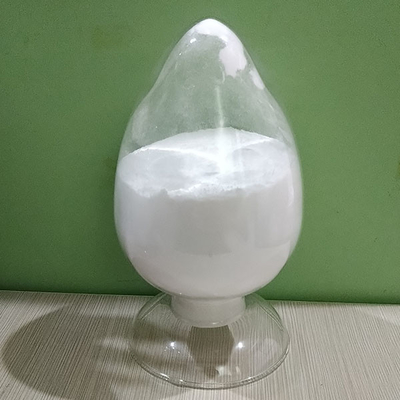HLB 5.2 GML Glycerol Monolaurate
Product Details:
| Place of Origin: | China |
| Brand Name: | CARDLO |
| Certification: | HALAL, ISO, SGS |
| Model Number: | GML |
Payment & Shipping Terms:
| Minimum Order Quantity: | 1 MT |
|---|---|
| Price: | USD3500-USD3700 /Ton |
| Packaging Details: | 25kg/bag |
| Delivery Time: | 7-10 business days |
| Payment Terms: | L/C, T/T |
| Supply Ability: | 2000MT per month |
|
Detail Information |
|||
| Appearance: | White Powder | Uasage: | Food Emulsifier , Preservative |
|---|---|---|---|
| Shelf Life: | 12 Months | HLB Value: | 5.2 |
| Highlight: | GML Glycerol Monolaurate,Glycerol Monolaurate Emulsifying Agent,HLB 5.2 glycerol monolaurate gml |
||
Product Description
GlyceroI Monolaurate (GML)
GlyceroI Monolaurate (GML), also known as dodecanoic acid monoglyceride, is an esterophilic nonionic surfactant that is naturally found in breast milk, coconut oil, and American sylvestris. The food emulsifier has an HLB value of 5.2 and is a safe, efficient and broad-spectrum bacteriostatic agent with dual functions of emulsifying and antiseptic.
Application of GlyceroI Monolaurate (GML) in food products
GlyceroI Monolaurate (GML) is widely used in milk and dairy products ,susceptible to microbial contamination. The spoilage microorganisms mainly include lactic acid bacteria, deuterated bacteria, lipolytic bacteria, yeasts and molds. The microorganisms mainly include Mycobacterium tuberculosis, Brucella, Staphylococcus aureus, Salmonella, Bacillus anthracis, and Yersinia enterocolitica. Stecchini etc. Treated GML with lactic acid by impregnation to treat parmesan cheese, and significantly inhibited mononuclear hyperplasia in cheese under vacuum at 5 °C.
The growth and reproduction of the special bacteria extended its shelf life to 12 days. GML combined with nisin and lactoperoxidase system can inhibit Escherichia coli 0157:H7 and Staphylococcus aureus, and the combination with EDTA can significantly inhibit the growth and reproduction of spoilage microorganisms in milk. Extend the shelf life and improve the safety of milk.
![]()
Application of GlyceroI Monolaurate (GML) in baked products
There are many kinds of baked goods. Most of the products are with heavy Sugar Heavy Oil. It easy to oxidize and degrade, and the high moisture content and rich nutrients provide natural medium for mold growth and reproduction. Studies have shown that mold is the most important microorganism causing mold and deterioration of baked products, which can not only lead to huge economic losses, but also molds and even toxic secondary metabolites (mycotoxins) that have an impact on human health, so use preservatives to control molds. The growth and reproduction are very important for maintaining the safety and nutrition of baked products. GML has a certain inhibitory effect on bread-dyed filamentous fungi such as Penicillium chrysogenum, Penicillium chrysogenum, Penicillium, Monascus and common filamentous fungi such as Aspergillus niger, Penicillium sinensis, and Penicillium jensei. At the same time, the GML microemulsion can ensure that the moon cake is stored under the constant temperature of 30 ° C for 40 days without mildew.
![]()
Application of GlyceroI Monolaurate (GML) in meat and meat products
Meat and meat products are rich in protein, have a large moisture content, are strict in storage environment, and are highly susceptible to microbial influences, causing product spoilage. The main pathogenic microorganisms are Pseudomonas and hot dead loops. Bacteria, lactic acid bacteria, Escherichia coli, and Listeria monocytogenes. GML can be combined with eugenol and sodium citrate to inhibit common meat spoilage microorganisms such as Lactobacillus curacae, Lactobacillus sakei, Leuconostoc mesogenes, Rhizoctonia solani, pathogenic microorganisms such as Escherichia coli Bacteria 0157: H7 and Listeria monocytogenes. Applying GML to low-salt, commercial sterile beef hot dogs, it was found that GML can significantly reduce the proliferation of Listeria monocytogenes, and the compounding with peroxidase system can significantly enhance the inhibitory effect on Staphylococcus aureus, but Compared with the peroxidase system alone, the inhibitory effect on E. coli after compounding was not significantly enhanced. GML was applied to roasted beef. Studies showed that the total number of psychrophilic bacteria, mesophilic bacteria and colonies was better than sodium lactate within 3 weeks before storage, but it did not have long-term inhibition. The combination of GML and lactic acid can extend the shelf life of chilled meat to 9 days. The combination with sodium dehydroacetate can extend the shelf life of low temperature meat products to 5 days.
Application of GlyceroI Monolaurate (GML) in flour foods and wheat flour products
GML is similar to fat, mostly in crystalline or crystalline form, interacts with starch to form a soluble complex, inhibits the aging of amylose, interacts with oils and proteins, forms a complex to improve the processing properties of food, and at the same time GML also has excellent antibacterial activity, which can significantly prolong the shelf life of foods and improve the safety of foods. Therefore, GML is of particular





